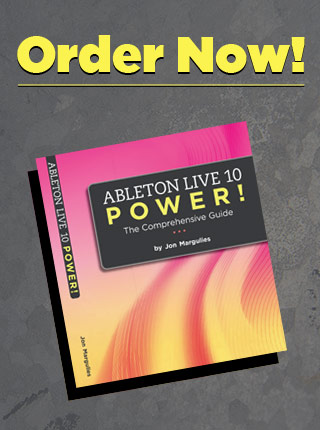If you’re designing a Live set that needs EQ on a few tracks, the obvious thing to do is to use the EQ 3, Live’s DJ-style EQ. The problem with this device (without getting into any issues regarding sound quality) has to do with how it works with a controller.
Simply stated, the problem is that when mapped to a MIDI controller, the EQ 3 doesn’t mirror the behavior of the EQ on a DJ mixer. On a mixer, the center position (twelve o clock) is zero – no cut or boost. If you map an EQ 3 to a controller however, the center position ends up looking like this:
An easy (and better sounding) solution to this problem is to customize an EQ 8 to serve your needs. There are a number of variations on the exact settings that work, but try setting it like this for starters.
Set Filter 1 to Low Shelf with a Frequency of 250Hz and a Q of 5 for a nice tight slope.
Set Filter 2’s Frequency to 1kHz. The Filter Mode and Q can be left at the default values:
Set Filter 3 to High Shelf with a Frequency of 8kHz and a Q of 3:
These are a few values to get you started. Part of the fun of using this EQ is how flexible it is. If you want, the high and low bands can be made somewhat gentler by moving the Frequency further towards the extremes and decreasing the Q. For example, you could change the low band to 100Hz and decrease the Q to 3.
Today’s tip is just a first step, but if you map the Gain control for Filters 1, 2 and 3 to your MIDI controller, you’ll see that we’ve solved problem one: the center point on your MIDI knob will now put each filter’s position at zero.
More about this EQ tomorrow.





